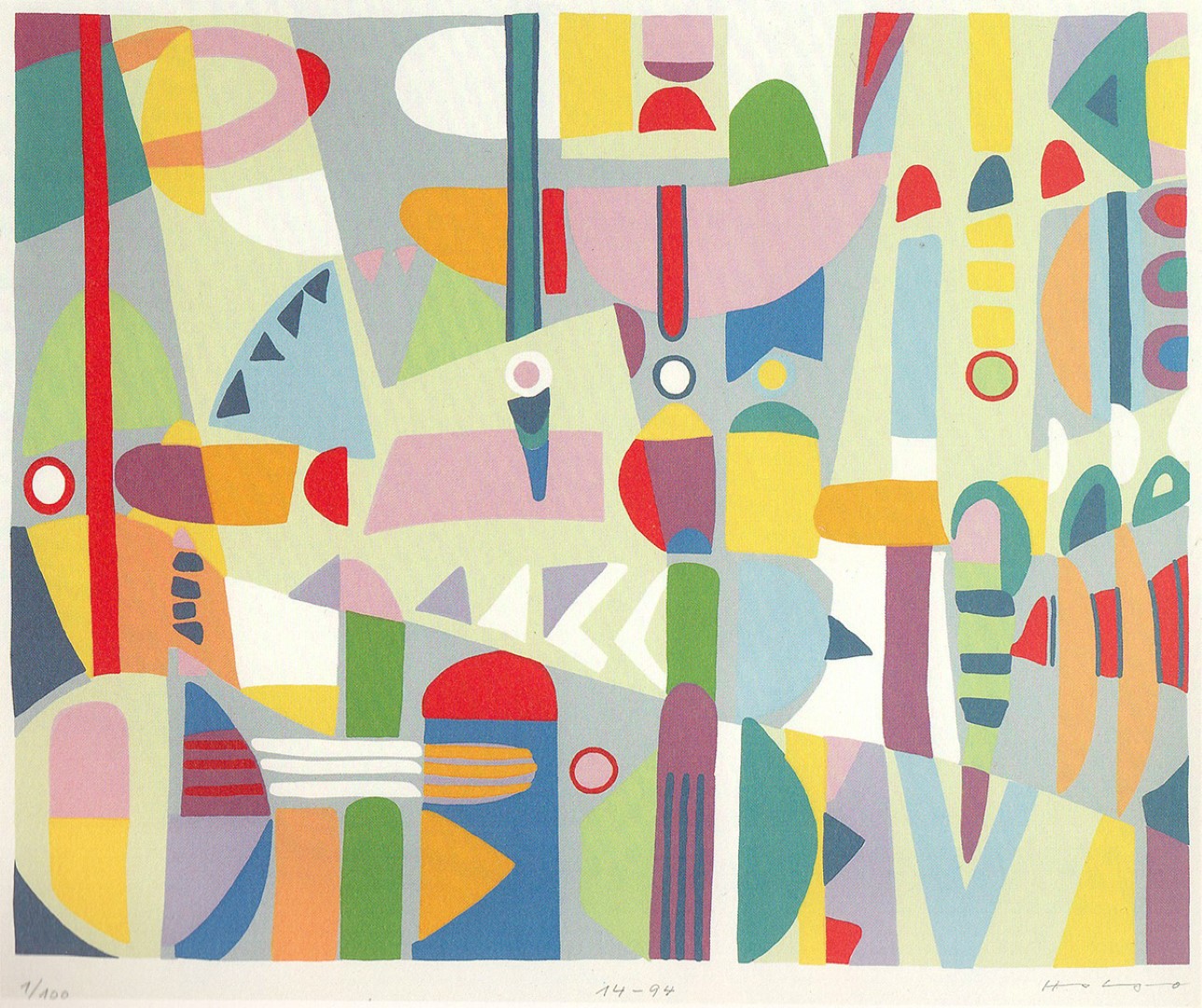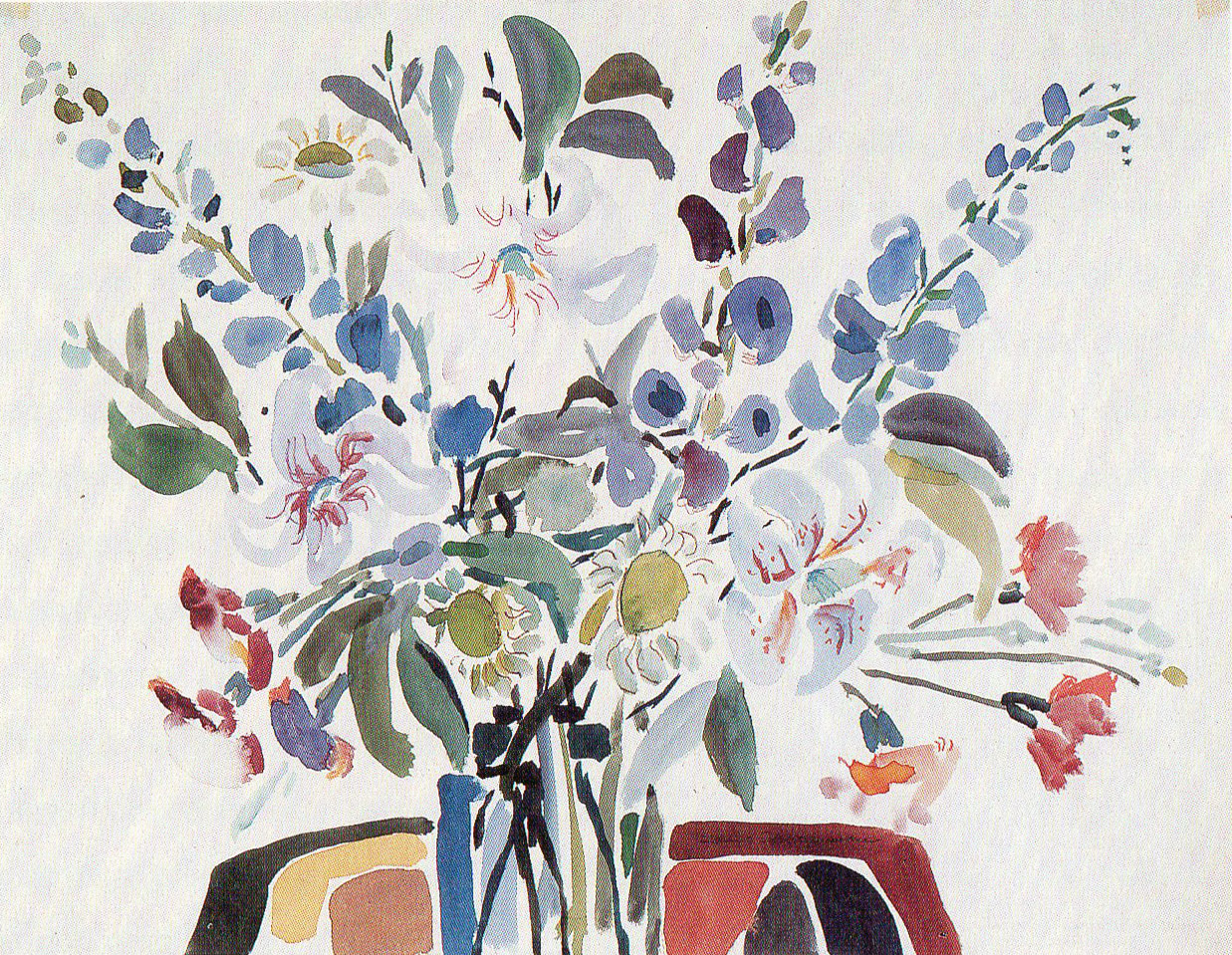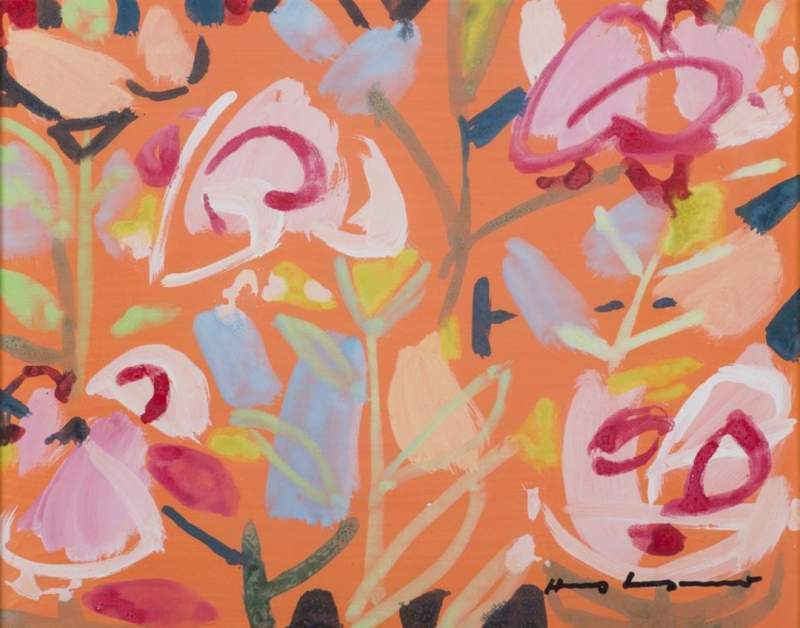Hanns Schwarzmaier; Every flower is a gift

When I was younger, I learned to ski in the Olympic village “Seefeld'' in Tirol close to Innsbruck, Austria. Famous for its beautiful Langlaufloipen (Cross-country skiing trails) running through dense woods and open field, and its superb location, positioned on a Solar Plateau, providing long days of sun, even in the winter months.
We always stayed at one place with our family, Pension Sonnhof, run by one woman, Frau Agnes. The last years she and her maid were over 80 years and still running this place.
You could call it a yearly family tradition, which started with my grandparents visiting Sonnhof in the summer months, for some time away in the mountains, hiking through nature, followed by my parents, uncles, aunts, cousins, my sisters, and myself. Time stood still in Sonnhof, cracking wooden floors and a Christmas tree with actual burning candles in it. The smell of other times…

Unfortunately, even Agnes at a certain point in her mid-80s got too old to run the place. She sold the property for a million or two, the old building was destroyed soon after and made place for modern apartments. Agnes moved to an elderly home across the street and spent her last years visiting the local casino, more than once.
.
One day during wintersport in Seefeld, Agnes showed us some paintings of flowers she made in her atelier, with instructions from Hanns, he was another regular guest of Sonnhof. He gave Agnes painting lessons in their later years and became good friends. I had seen him around a couple of times, but as an adolescent I wasn’t really into flowers, you can imagine why.

Also, my grandmother Martijntje was still visiting Sonnhof on a regular basis, and immediately had a good bond with the peculiar artist Hanns. Both had a background in media and knew about artistic life. He worked for the ZDF/ARD (German Television), Martijntje used to work for the Wereldomroep (Dutch Radio), and her late husband was a musician. They spent some lovely times together, and as a gift Hanns gave her two watercolor paintings. Almost abstract, but if you look closely, you can spot the flowers.
Those two paintings are now hanging in our living room.

As I got older my interest in art and particularly abstraction in art expanded. Hanns Schwarzmaier made those paintings when his sight got worse. He barely could see the flowers, but strong in color-composition he still represented the vibrant feeling of an image of flowers. His loss of sight led him, without further choice, to a further path of abstraction. If you look longer to the painting you will find a bed, colorful shadows figures with bending heads, and myself reflected inside the painting.

I sipped my coffee from the cup designed by Hanns Schwarzmaier, produced by Würth and started my art-detective research. There was almost nothing out there about this artist, but I recently found out that over a 100 of his major works are archived in the collection by the succesful businessman and billionaire art-collector Reinhold Würth, a personal friend of Schwarzmaier for many years. Most of the paintings he made before 1945 are lost in wartimes.

The outcome of my research is contained in the summary below, combined with a selection of paintings he created at his peak momentum in the 70s and 80s.
Bring joy and beauty to our imperfect world with my paintings
- Hanns Schwarzmaier's (1914 Turin - Unknown)

Schwarzmaier was not influenced by the often life-questioning-dark Zeitgeist tendencies in the painting of numerous academy and painter colleagues, he consequently pursued his personal intentions consistently and spiritedly through all the years of his artistic career.

His worldly attitude to life and work is not only evident in his pictorial and painterly work, but also reflected in the diversity of his artistic activity, a successful and long career as a filmmaker in the 1950s to 1970s and his work as a stage designer, industrial and fashion designer.

Schwarzmaier's compositions are always cheerful and harmonizing, using strong colors and bold gestures. He masters the game of color and form. His pictures pass on his personal painter's philosophy “to bring joy to life” to the viewer. His work is sensitive, light without being obtrusive. Seen in this way, Schwarzmaier's painting can even be ascribed a therapeutic effect that goes beyond its artistic value.
“Schwarzmaier loves the impulsive development of his subject, sets his colors directly and accurately. His pictures should infect the viewer with freshness, with spontaneity in the colorful - after all, a comprehensive liberation could be effected in the recipient.”

The joy in his work and in life with all his colors is reflected in many very successful, mostly sold-out exhibitions at home and abroad, including Munich, Zurich, New York, Innsbruck, Salzburg, London, Padua, Verona, Milan, and Rome. At the invitation of the President of the European Parliament, a comprehensive show was held in Strasbourg in 1995.

In addition to private purchases, a large part of his work found its way into well-known public collections. Hanns Schwarzmaier's painting aroused the interest of entrepreneur and art collector Prof. Dr. Reinhold Würth, who then initiated recurring exhibitions and participation in exhibitions in his museums and whose top-class collection, which is highly valued by art connoisseurs, has since housed the largest bundle of works by Schwarzmaier and has been published in various publications.

Companies such as MAN, Osram, Continental AG, Siemens or Veneta Decalgomme also have numerous works by him; Bill Gates bought over 50 works for Microsoft. Hanns Schwarzmaier's artistic life 's work includes more than 4,000 paintings, watercolors, and drawings.

An artist who painted flowers all his life, in an undendless array of configurations. Recurring patterns of colors and shapes, sometimes more abstract, other times more figurative, or a mix between both worlds. His vivid compositions, made completely free of every conceptual notion or idea of abstraction, liberate a space for everybody's imaginations to enjoy the wonders that can be found in his body of work, and nature itself.

CV
1914 Born in Turin, mother Italian - Father German, came to Germany at the age of four
1928 Apprenticeship as house painter and decorative painter in Munich
1943-46 in American captivity, high school in the officer camp in Trinidad, USA. First professional art studies with Professor Rudolf Dimai.
1946–49 Studies at the Academy of Fine Arts in Munich under Professor Karl Casper.
1950–74 Works as a filmmaker. More than 80 films have been made for ARD and ZDF Since 1945, numerous exhibitions in Switzerland, Austria, USA, Italy, Great Britain, and Germany. Public. purchases include Bönn, Frankfurt am Main, Cologne, Milan, Munich, Salzburg, Turin, Padua, Vicenza, Verona, and Zurich

CV till 1994
1945 Galerie Gurlitt, München
1952 Galerie Neupert, Zürich
1954 Galerie Gurlitt München
1955 Galerie Gurlitt, München
1978 Galleria La Loggetta, Monselice
1979 Galleria DUe Ruote, Vicenza
1979 Galleria Il Sigillo, Padova
1980 Galerie im Rathaus, Tutzing
1980 Galerie Dr. Grützmacher, Frankfurt a. M.
1980 Galerie Prof. Stöcker, Würzburg
1980 Galerie Ynnsprugger Werkstatt, Innsbruck
1981 Museumspavillon Mirabellgarten, Salzburg
1982 Galerie der Stadtsparkasse, Rosenheim
1982 Istituto Culturale Italo-Tedesco, Padova
1983 Schloss Hermersberg, Hohenloher Land
1984 Städtische Galerie, Biberach
1984 Galerie Ynnsprugger Werkstatt, Innsbruck
1984 Sparkasse Neustadt a.d. Aisch
1985 Galerie im Osram-Haus, München
1985 Galerie Furtner, Raubling
1986 Alpbach, Österreich
1986 Christopher Hull Gallery, London
1987 Galeria d`Art Christel Kusch, Anguillara-Roma
1989 Stadt Garmisch-Partenkirchen
1989 Galerie Schrade in Schloss Mochental
1990 Sparkasse Neustadt a.d. Aisch
1990 Galleria Dr. Lauro Jaccariono, Padova
1990 Hirschwirtscheuer, Künzelsau
1993 Sparkasse Neustat a.d. Aisch
1993/94 Hirschwirtscheuer, Künzelsau

Hanns Schwarzmaier; Every flower is a gift by M. Moonen 02.2022 [EDUCATIONAL PURPOSE ONLY] Triple-A Society, M. Production